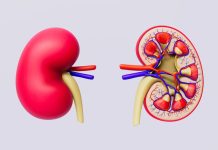
In a new study, researchers have developed a ‘fat-burning’ molecule that has big implications for the treatment of obesity and liver disease.
The research was conducted by a team at Virginia Tech and elsewhere.
Obesity affects more than 40% of adults in the United States and 13% of the global population.
With obesity comes a variety of other interconnected diseases including heart disease, diabetes, and fatty liver disease, which makes the disease one of the most difficult—and most crucial—to treat.
It is hard for obese people to lose weight and keep it off; being on a diet can be so difficult.
So, a pharmacological approach, or a drug, could help out and would be beneficial for all of society.
In the study, the team identified a small mitochondrial uncoupler, named BAM15, that decreases the body fat mass of mice without affecting food intake and muscle mass or increased body temperature.
Additionally, the molecule decreases insulin resistance and has beneficial effects on oxidative stress and inflammation.
The finding hold promise for future treatment and prevention of obesity, diabetes, and especially nonalcoholic steatohepatitis (NASH), a type of fatty liver disease that is characterized by inflammation and fat accumulation in the liver.
In the next few years, the condition is expected to become the leading cause of liver transplants in the United States.
The ultimate goal of the team is to transition the anti-fat treatment from animal models to treatment for NASH in humans.
The lab has used its better compounds in animal models of NASH, which have been proven to be effective as anti-NASH compounds in mice.
The team aims to improve the ways in which the body burns fuel and fights back against the body’s ability to store excess nutrients as people age.
These promising NASH treatment compounds are licensed by their company and are patented by Virginia Tech.
The study is published in Nature Communications.
Copyright © 2020 Knowridge Science Report. All rights reserved.



